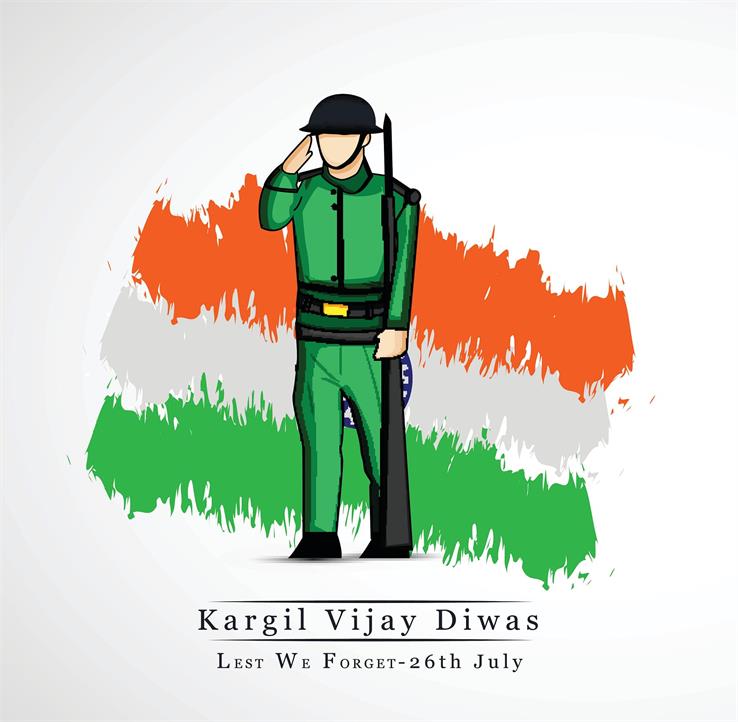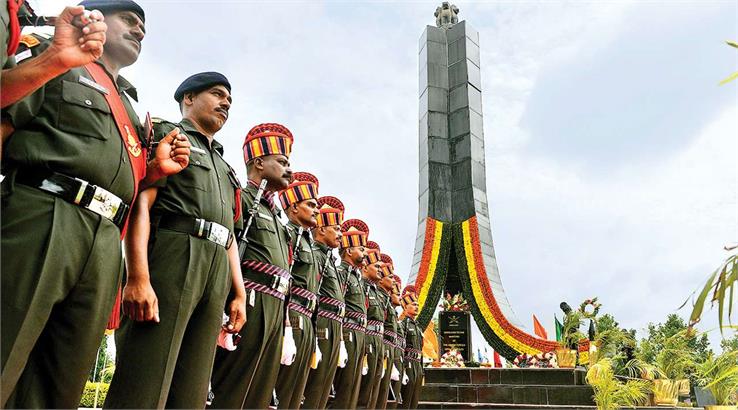Kargil Victory Day
Kargil Victory Day or Kargil Vijay Diwas is termed after the successful operation called ‘Vijay.’ This memorial day is held on 26th July every year in India as it observes the end of the Kargil conflict between India and Pakistan. On 26th July 1999, India got a victory in the Kargil War and took control over the high outposts which had been lost to Pakistan. The war was fought between the two countries for over 60 days resulting in loss of many lives on both sides. It took place in the Kargil district of Kashmir, a disputed region between the two, near the Line of Control. Pakistan tried to seize the Kargil territory. The war was ended with India regaining control of all the earlier held area, therefore re-establishing the status quo ante bellum.
The day is celebrated in honor of the Kargil War’s Heroes in the Kargil-Drass sector and the national capital New Delhi. The Prime Minister of India pays tribute to the soldiers at Amar Jawan Jyoti at India Gate on this day.
History
There had been lesser armed conflicts that involve the military forces between India and Pakistan, after the Indo-Pakistani War of 1971. Although during the 1980s, the two neighbors were increasing their efforts to control the Siachen Glacier by setting up military outposts on the nearby mountain ridges, resulting in clashes. Further, the tensions and conflicts escalated during the separatist activities in Kashmir through the 1990s, some of which were supported by Pakistan. In 1998, both countries started conducting nuclear tests, which led to an increasingly confrontational atmosphere. Afterward, India and Pakistan signed the Lahore Declaration in February 1999 in order to resolve the conflict. It pledged to provide a peaceful and mutual resolution to the Kashmir conflict. However, in the times of the winter of 1998-1999, some parts of the PAF (Pakistani Armed Forces) were secretly training and sending their troops as well as paramilitary forces in the region of the Indian side of the LOC. This also included some alleged forces in the form of Mujahideen entering into the Indian territory. The access to the region was code-named ‘Operation Badr.’ The objective of the Pakistani infiltration was to split the link between Kashmir and Ladakh and make Indian forces to depart from the Siachen Glacier. According to them, it would have compelled India to negotiate a settlement of the broader Kashmir difference. They also believed that any tension in the territory would make the Kashmir issue broader internationally, resulting in a speedy solution. It was one of the key elements to boost the morale of the decade-long rebellion between them for the Indian State of Kashmir.
In the beginning, the Indian forces present in the region assumed that the infiltrators were Jihadis due to less information of nature. Indian troops claimed that they would throw them out within a few days. Later, the Indian army realized that the plan to attack was on a very large scale when they discovered a significant number of infiltrators around the LOC and the different strategies employed by them. The total area seized is generally accepted to be between 130 km² – 200 km² by the ingress.
The Government of India countered with Operation Vijay in which 200,000 Indian troops were deployed. The major war came to an official end on July 26, 1999, making history, hence solemnizing it as Kargil Vijay Diwas.
A total number of 527 soldiers from the Indian Armed Forces (IAF) sacrificed their lives during the war.









